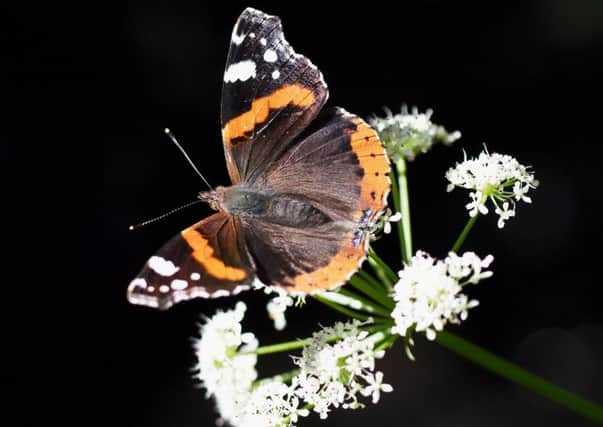New Scottish wildflower trails creating a buzz for people and bees


The five new routes, in national nature reserves at Taynish in Argyll and Bute, Flanders Moss in Stirlingshire, Forvie in Aberdeenshire, St Cyrus in Angus, and Creag Meagaidh in the Highlands, are easily accessible and involve only short walks.
Visitors to the sites, run by Scottish Natural Heritage (SNH), can expect to see a host of native flower species as well as a diverse range of wildlife that depends on them.
Advertisement
Hide AdAdvertisement
Hide AdSign and information boards have also been erected, giving details of the plants and animals at each site and tips on how to help declining pollinators survive.
Stuart MacQuarrie, national nature reserve manager for SNH, said: “These trails are not only beautiful for visitors to our national nature reserves, but they’re wonderful for pollinators like bees, butterflies and ladybirds.
“There’s so much work going on to bolster pollinator populations by so many individuals and organisations in Scotland.
“We’re thrilled that these trails build on these many efforts to help our pollinators.”
SNH’s David Pickett, reserve manager at Forvie, said: “The trail at Forvie gives visitors a wonderful welcome to the reserve.
“The whole visitor centre is surrounded by wildflowers.
“We planted about 20 species of meadow flowers, as well as creating deadwood piles, planting fish boxes with wildflowers and creating a living wall on part of the visitor centre. It’s really quite spectacular.
“It’s wonderful to walk among the flowers and see all the insects that are benefiting from the trail. There’s lots of fascinating information about the important work pollinators do as well.”
Newly planted flowers include oxeye daisy, common knapweed, bird’s-foot trefoil and teasel.
Advertisement
Hide AdAdvertisement
Hide AdThese complement flowers already growing at the sites such as wild angelica and red and white clover.
The new national trails come in addition to a route opened last year on SNH grounds at Battleby, near Perth, which has a vibrant wildflower meadow, a thriving bee hotel and a living wall.
Studies have shown that getting outside in nature is beneficial for people’s physical and mental health.
Pollinators are vital for biodiversity and play a crucial role in food production and farming – three quarters of food crops rely on pollination.
Seeing them in action also contributes to people’s enjoyment of the countryside.
But wild pollinators are under threat, facing pressures from habitat degradation, changes in land use, disease, pesticides and climate change.
Scotland’s bumble bees, solitary bees, honey bees and hoverflies are in serious trouble.
Half of bumblebee species are in decline, with seven crashing by more than 50 per cent in the last 25 years.
Advertisement
Hide AdAdvertisement
Hide AdAs much as 97 per cent of UK wildflower meadows have been lost since the 1930s, as intensive farming has gradually replaced them.
The disappearance of these habitats is thought to have contributed to the downward spiral of butterflies and bees.
SNH has 43 national nature reserves. The new trails are part of work for the Pollinator Strategy for Scotland.